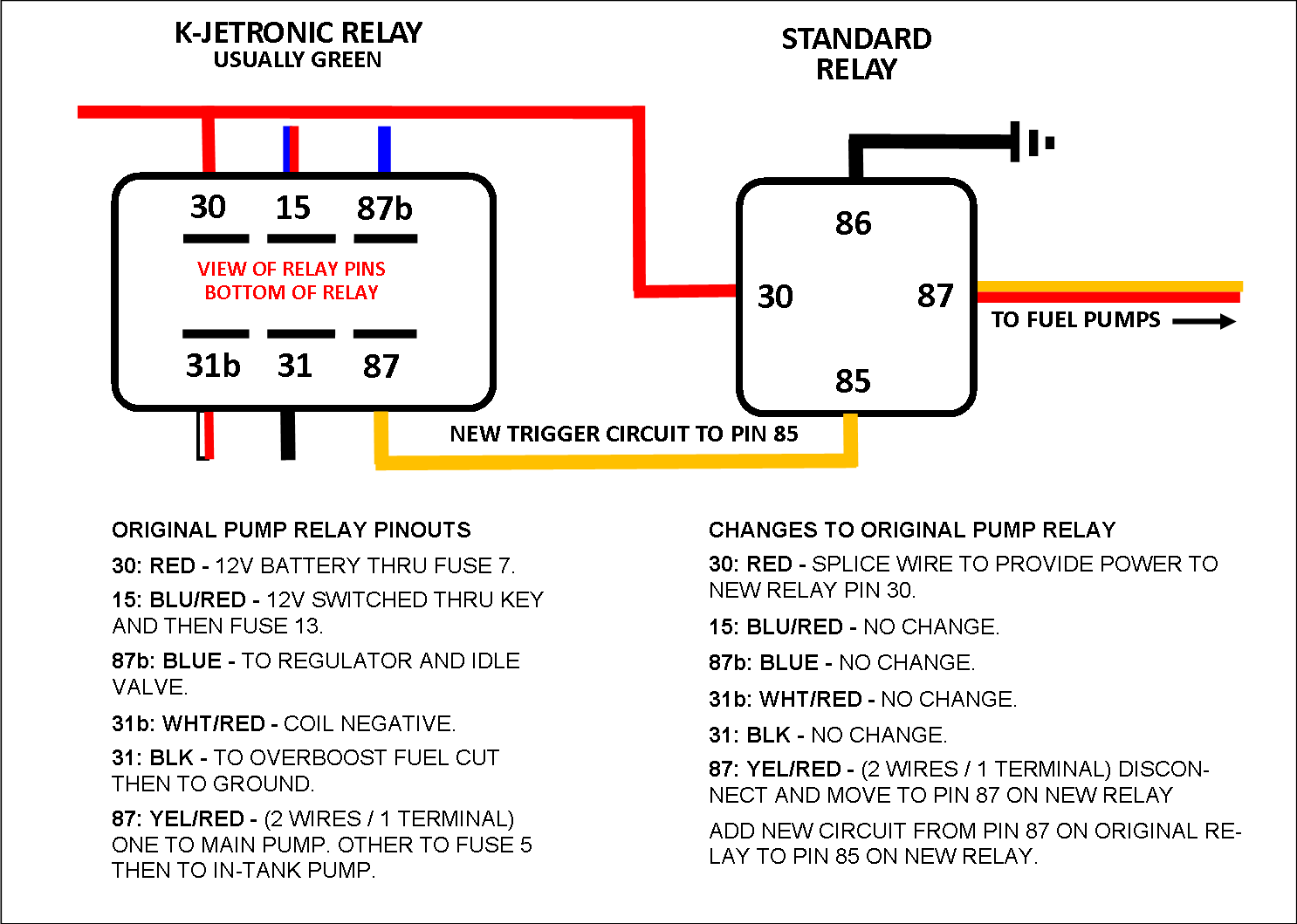joedirt
New member
- Joined
- Aug 6, 2017
- Location
- Beacon Falls, CT
Bear with me...this car a 5.0 swap in it to make things more confusing. It did run at one point, I believe a year or so ago.
Im getting zero fuel at the rail I know this much so far. Im starting with testing the in tank fuel pump wires as ill be replacing it after I actually get voltage to the connector.
Im reading up on http://cleanflametrap.com/transferPump.htm and I was wondering if anyone had any info on the relay or relay's in my car that run the pumps? Such as what terminals I should be getting 12 volts to?
Going by this picture i'm not getting any voltage on the black wire I should be. Although I cant remember now if there was a Yellow/Red wire on my connector...

Either way im hunting around for any wiring diagrams I can find on the path of the fuel pump wires if anyone has a link or photo id greatly appreciate it I didnt dig into the fuse panel yet either, which I will check first before ripping apart the dash to find the relays.
I didnt dig into the fuse panel yet either, which I will check first before ripping apart the dash to find the relays.
Im getting zero fuel at the rail I know this much so far. Im starting with testing the in tank fuel pump wires as ill be replacing it after I actually get voltage to the connector.
Im reading up on http://cleanflametrap.com/transferPump.htm and I was wondering if anyone had any info on the relay or relay's in my car that run the pumps? Such as what terminals I should be getting 12 volts to?
Going by this picture i'm not getting any voltage on the black wire I should be. Although I cant remember now if there was a Yellow/Red wire on my connector...

Either way im hunting around for any wiring diagrams I can find on the path of the fuel pump wires if anyone has a link or photo id greatly appreciate it
 I didnt dig into the fuse panel yet either, which I will check first before ripping apart the dash to find the relays.
I didnt dig into the fuse panel yet either, which I will check first before ripping apart the dash to find the relays.


